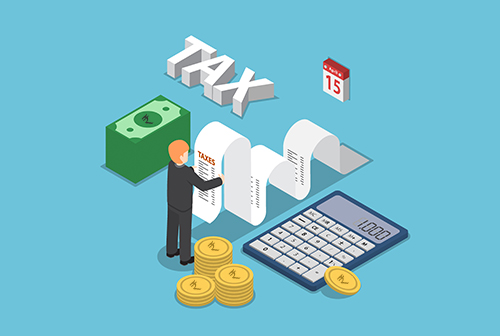How can you Save Tax on the Interest Earned on Fixed DepositsPosted by Arwind Sharma on September 1st, 2018 Almost all banks, NBFCs and corporate firms in India offer various forms of term deposit. The most popular form of term deposit still remains a fixed deposits. This is a low-risk investment tool with competitive return on investment(ROI) as compared to demand deposit accounts. For instance, Fixed Deposits offers 8.4% interest which can go up to 8.75% for senior citizens. This is higher than the market average. Thus, FDs are the best option for individual looking for lump-sum investment opportunities. Most FDs come with a tenor ranging from a few days to many years.
Understanding the need of investors for instant liquidity, FDs also have a provision of premature withdrawal. This feature enables depositors to exit the scheme before completion of the tenor, in exchange for a nominal penalty fee. One of the most attractive features of an FD are the tax benefits offered by them. The interest accrued on FDs are liable to tax deducted at source or TDS. Interest generated on FDs are taxable only if the interest earned is beyond Rs.10,000 per year. Post deduction, the interest earned is taxed at 10% if the investor has submitted valid PAN details while availing this financial tool. In case the PAN details are not available the investor is taxed at 20%. Here are some tips to save on interest earned from FDs: Submit form 15G/15H As per the Indian Income Tax Act, investors can submit Form 15G or 15H to reduce their tax liability. Resident Indian individuals with zero taxable income and aged 60 years and above can utilize 15H for tax saving. On the other hand, resident Indian individuals and Hindu Undivided Families(HUF) with a total interest income of Rs.2.5 lakh and below 60 years of age can claim these benefits by submitting a 15G form. Investors can utilize this FD Calculator to evaluate the annual interest earned.
Both these forms are valid for a single financial year. Hence, investors need to submit these forms on a yearly basis. Also, one needs to submit these forms at the beginning of a financial year, generally in the first week of April, the time when financial institution deducts the applicable TDS. Time your Investment As already mentioned interest earned from FDs are exempted up to a maximum of Rs.10,000 per financial year. It’s essential to time investment in such a manner that the interest acquired during the year does not exceed Rs.10,000. For instance, if you plan to invest Rs.5 lakh in an FD offering 7.6% interest, start your term deposit in January. This will enable you to demonstrate an income of Rs.9,500 which is exempted from TDS. It is important to compare FD interest rates and plan one’s investment(s) accordingly. Distribute your Funds Previously individuals used to split up their funds by investing in multiple FDs. However, since Form 26AS was introduced the above option has lost its charm. This form provides in-depth information about an individual’s holdings and thus will enable the regulatory authorities to acquire all the details about the total money invested by an individual in FDs. Hence in the current situation, the only option left for individuals is open a HUF FD account or one in the name of his/her spouse. These accounts will be treated separately, and the tax liability will also be divided. Like it? Share it!More by this author |




